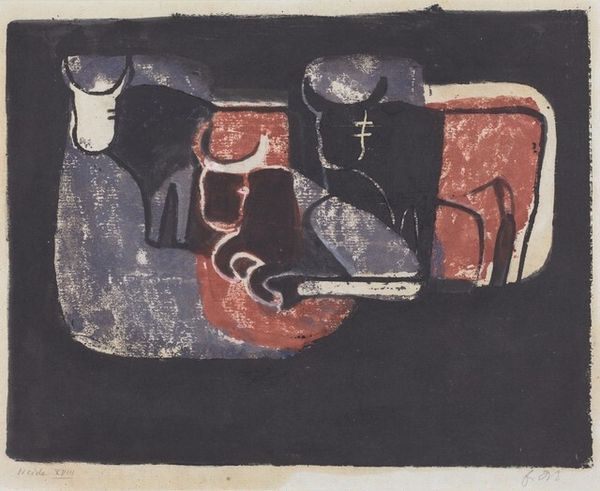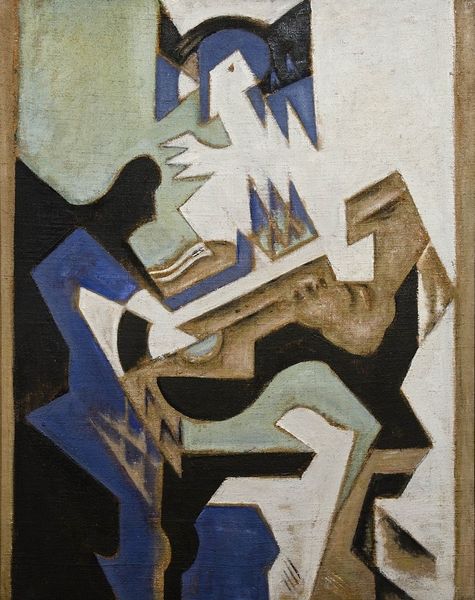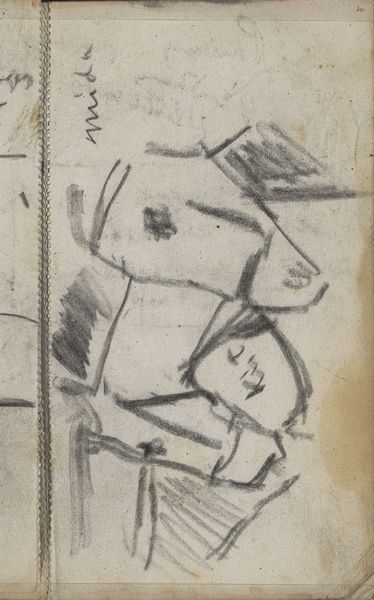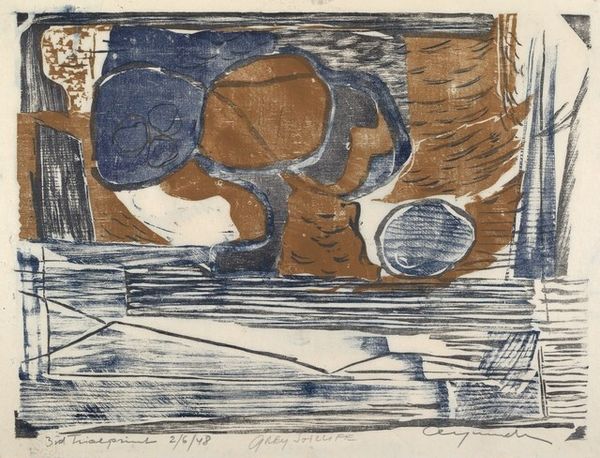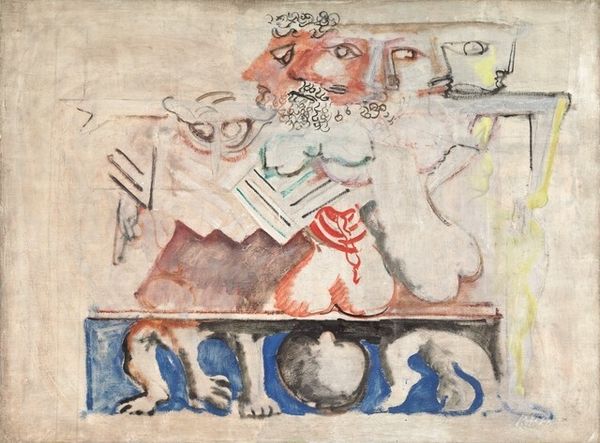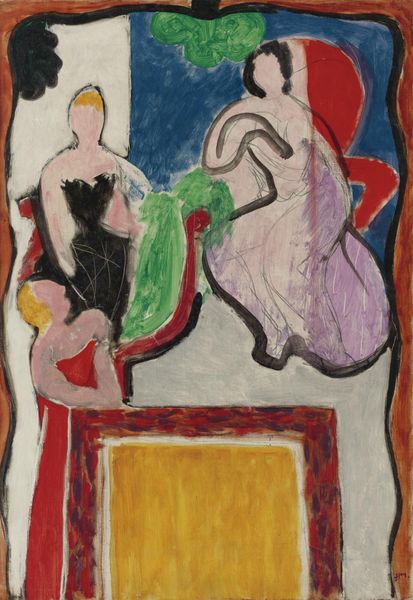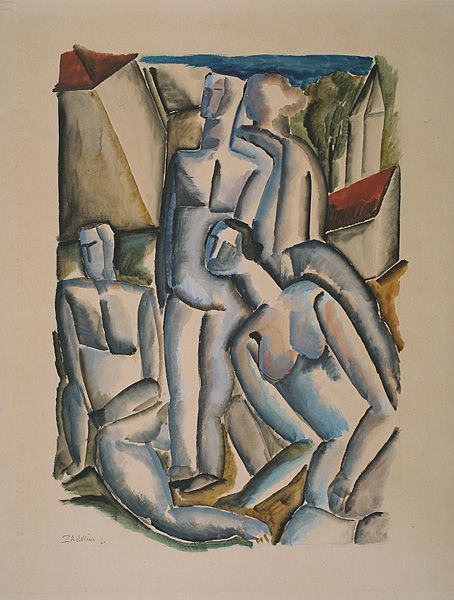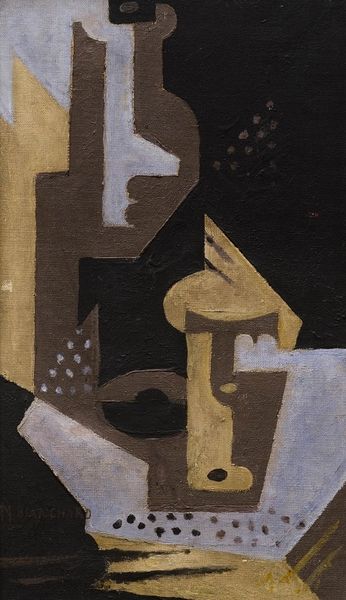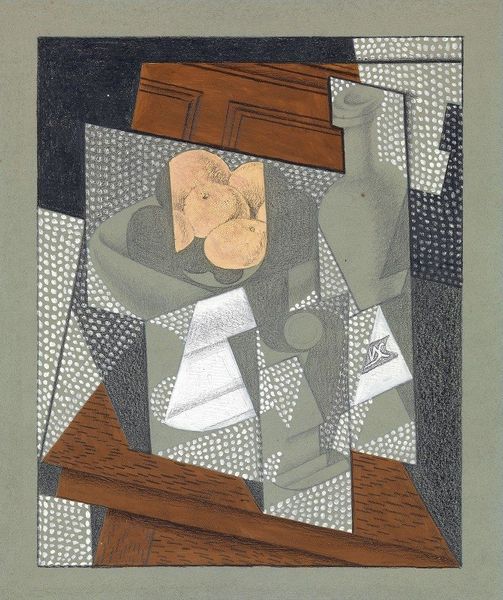
painting, oil-paint
#
cubism
#
painting
#
oil-paint
#
coloured pencil
#
geometric-abstraction
Copyright: Public domain
Editor: Here we have María Blanchard’s “Naturaleza Muerta Con Tijeras”, or “Still Life with Scissors,” from 1917. It’s an oil painting, fairly small… the fragmented shapes give it quite a disorienting feel, almost unsettling. What do you see in this piece? Curator: I see a powerful statement emerging from the chaos of Cubism, particularly when viewed through a feminist lens. Blanchard, often overshadowed by her male counterparts, utilizes this fractured form to perhaps mirror the fragmented identities and experiences of women in a rapidly changing society. Editor: Interesting. Could you elaborate? Curator: Certainly. Consider the scissors – a traditionally domestic tool. Blanchard places it within this avant-garde context, almost disrupting the still life. Is she perhaps making a statement about women’s roles being disrupted, cut apart, and reassembled in new and unconventional ways during and after World War I? Does the muted palette reflect the somber atmosphere of wartime Europe, particularly the emotional landscape for women who were left behind or stepped into new roles? Editor: That's a perspective I hadn't considered. The scissors as a symbol of both domesticity and disruption... Curator: Exactly! And consider the geometric abstraction. Is Blanchard consciously dismantling traditional modes of representation, much like women were dismantling traditional social structures? What do you make of the interplay between representation and abstraction? Editor: I guess I assumed that Blanchard was exploring abstraction for the sake of abstraction. Curator: Perhaps…or, perhaps she uses Cubism to disrupt not only how we view still life but also how we view a woman's place in the world. Editor: I never really considered the possible links between an artist’s social context and Cubism. Thanks! Curator: It's about looking beyond the surface, understanding that art is always in conversation with the world around it, reflecting and challenging societal norms. I am always thrilled by the idea that a piece that has initially aesthetic and experimental is capable of social reflection.
Comments
No comments
Be the first to comment and join the conversation on the ultimate creative platform.

